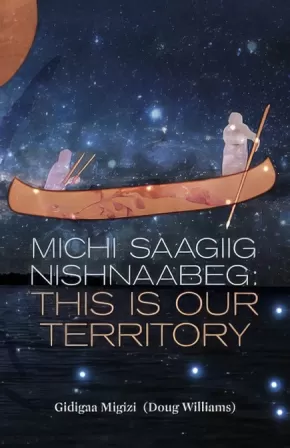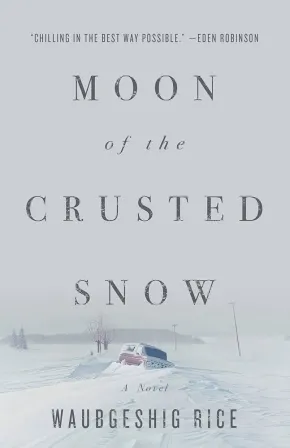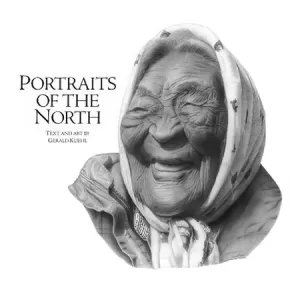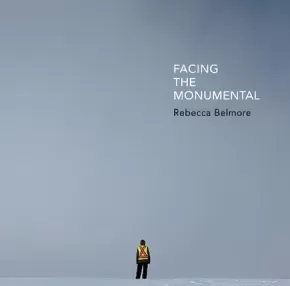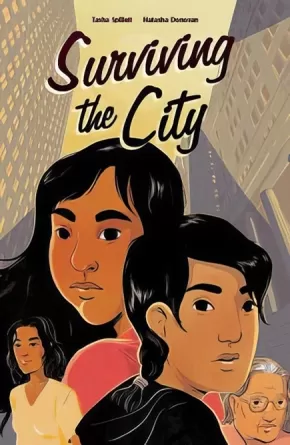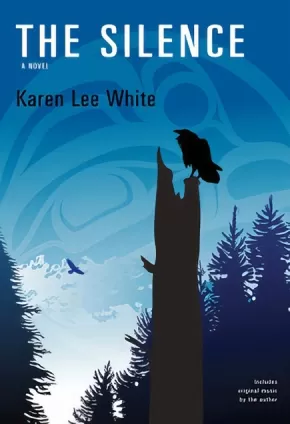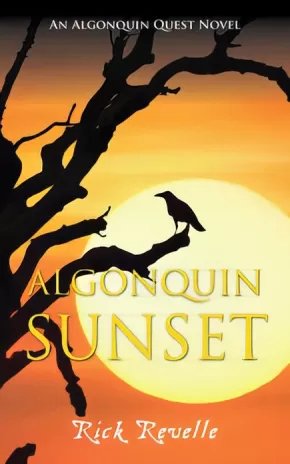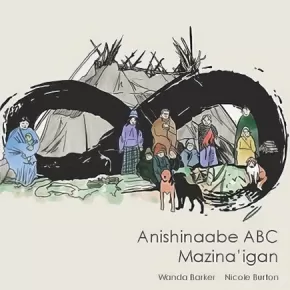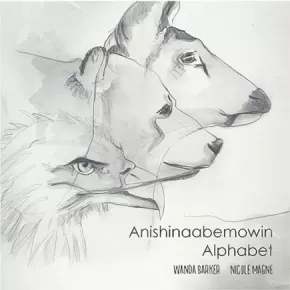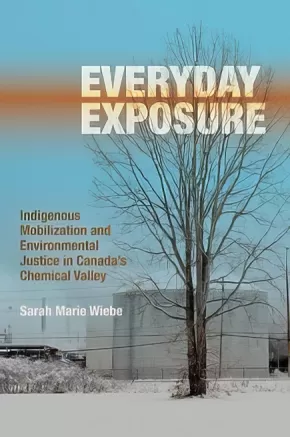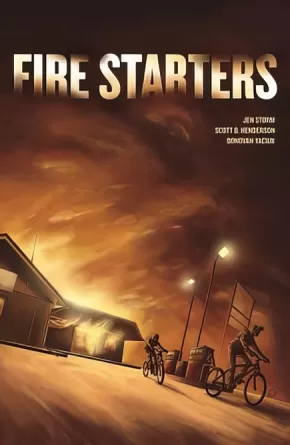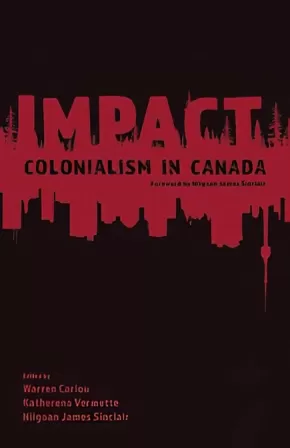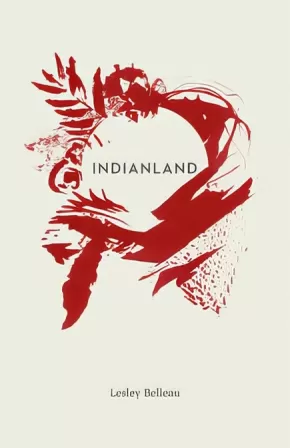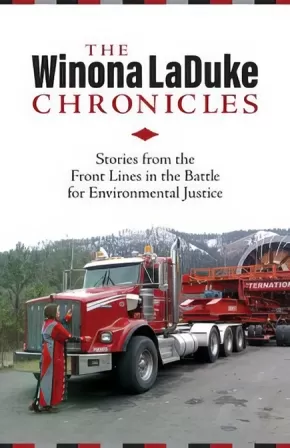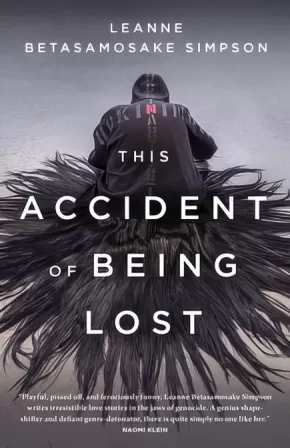
Anishinaabeg
121
-
135
of
168 Results;
Sort By
Go To
of 12
Michi Saagiig Nishnaabeg: This Is Our Territory
$22.00
Format:
Paperback
Text Content Territories:
Indigenous Canadian; First Nations; Anishinaabeg; Mississauga; Curve Lake First Nation;
ISBN / Barcode: 9781927886090
Synopsis:
Synopsis:
In this deeply engaging oral history, Doug Williams, Anishinaabe elder, teacher and mentor to Leanne Betasamosake Simpson, recounts the history of the Michi Saagiig Nisnaabeg, tracing through personal and historical events, and presenting what manifests as a crucial historical document that confronts entrenched institutional narratives of the history of the region. Edited collaboratively with Simpson, the book uniquely retells pivotal historical events that have been conventionally unchallenged in dominant historical narratives, while presenting a fascinating personal perspective in the singular voice of Williams, whose rare body of knowledge spans back to the 1700s. With this wealth of knowledge, wit and storytelling prowess, Williams recounts key moments of his personal history, connecting them to the larger history of the Anishinaabeg and other Indigenous communities.
Reviews
"This book gives us an alternative perspective on historical record that is both personal and collective. Doug Williams reminds us of the generations of Indigenous knowledge keepers and of a history that stretches back prior to European contact-including the disruption of contact. This book is his gift to the Michi Saagiig and to all Anishinaabek. It is also a gift to Canadians who want to help decolonize this country. - Armand Garnet Ruffo
"Storytelling is not just a gift. It's not just an art. It's also a responsibility: the weaving together of history, philosophy, culture and humour frequently highlighting a culture's perspective on the world. Doug Williams has been doing this as long as I can remember. He lives the culture, not just talks about it. The people and places he talks about in Michi Saagiig Nishnaabeg are more a part of our history then all the things going on in Ottawa." - Drew Hayden Taylor
Educator Information
Recommended in the Canadian Indigenous Books for Schools 2019-2020 resource list as being useful for grades 9 to 12 for Creative Writing, English Language Arts, Media Studies, and Social Studies.
Additional Information
168 pages | 5.50" x 8.50"
Moon of the Crusted Snow: A Novel
$22.95
Format:
Paperback
Text Content Territories:
Indigenous Canadian; First Nations; Anishinaabeg;
ISBN / Barcode: 9781770414006
Synopsis:
Synopsis:
A daring post-apocalyptic novel from a powerful rising literary voice.
With winter looming, a small northern Anishinaabe community goes dark. Cut off, people become passive and confused. Panic builds as the food supply dwindles. While the band council and a pocket of community members struggle to maintain order, an unexpected visitor arrives, escaping the crumbling society to the south. Soon after, others follow.
The community leadership loses its grip on power as the visitors manipulate the tired and hungry to take control of the reserve. Tensions rise and, as the months pass, so does the death toll due to sickness and despair. Frustrated by the building chaos, a group of young friends and their families turn to the land and Anishinaabe tradition in hopes of helping their community thrive again. Guided through the chaos by an unlikely leader named Evan Whitesky, they endeavor to restore order while grappling with a grave decision.
Blending action and allegory, Moon of the Crusted Snow upends our expectations. Out of catastrophe comes resilience. And as one society collapses, another is reborn.
Reviews
“This slow-burning thriller is also a powerful story of survival and will leave readers breathless.” — Publishers Weekly
"Rice seamlessly injects Anishinaabe language into the dialogue and creates a beautiful rendering of the natural world. . . This title will appeal to fans of literary science fiction akin to Cormac McCarthy as well as to readers looking for a fresh voice in indigenous fiction.” — Booklist
“Perfect for those who read Iain Reid's Foe this summer and are looking for something in the same vein.” — The Globe and Mail
“The creeping tension and vividly drawn landscapes make Waubgeshig Rice’s characters choices all the more real.” — Toronto Star
“Moon of the Crusted Snow asks how do we live in a good way during the collapse of the infrastructure that supports modern life? For Evan Whitesky, the answer lies in rekindling Ojibwe, the old ways, language and culture. For other characters, when the food runs out, all options are on the table, no matter how gruesome. As the tensions between those surviving the end of modern civilization build to a harrowing conclusion, Rice deftly weaves tender family moments with his brutal survival scenes in the unforgiving northern Ontario winter. Chilling in the best way possible.” — Eden Robinson, award-winning author of Monkey Beach and Son of a Trickster
Educator Information
Recommended in the Canadian Indigenous Books for Schools 2019-2020 resource list as being useful for grades 10 to 12 for English Language Arts.
Contains strong language and mature subject matter relating to violence and death.
Additional Information
224 pages | 5.50" x 8.50"
Portraits of the North
$29.95
Artists:
Format:
Paperback
Text Content Territories:
Indigenous Canadian; First Nations; Anishinaabeg; Oji-Cree; Ojibway; Cree (Nehiyawak); Dene; Métis;
ISBN / Barcode: 9781988182414
Synopsis:
Synopsis:
This gorgeous book offers an incomparable glimpse into the experiences and history of more than one hundred First Nations and Métis elders from Canada’s North —“the last generation born on the land.” These stunning graphite pencil portraits are rendered with love, respect, and painstaking detail, along with gripping intimate profiles assembled from oral accounts and anecdotes. Their poignant facial features, lines, and creases, weathered by the harsh outdoors and a lifetime of challenges, are like badges of their remarkable achievements, sustained resolve, inspired patience, and deep-set defiance to the hardships their people have endured for generations. The masterful realism of Kuehl’s work helps uncover the tales of these seasoned individuals—their many triumphs and trials revealing in turn a greater portrait of life in the communities of Northern Canada, a compelling homage, and an enduring historical legacy. The portraits capture images of Cree, Ojibway, Oji-Cree, Dene and Métis peoples.
Additional Information
236 pages | 10.03" x 10.03"
Rebecca Belmore: Facing the Monumental
$40.00
Artists:
Editors:
Format:
Hardcover
Text Content Territories:
Indigenous Canadian; First Nations; Anishinaabeg; Ojibway; Lac Seul;
ISBN / Barcode: 9781773100968
Synopsis:
Synopsis:
Facing the monumental issues of our time.
In a 2012 performance piece, Rebecca Belmore transformed an oak tree surrounded by monuments to colonialism in Toronto's Queens Park into a temporary "non-monument" to the Earth.
For more than 30 years, she has given voice in her art to social and political issues, making her one of the most important contemporary artists working today. Employing a language that is both poetic and provocative, Belmore's art has tackled subjects such as water and land rights, women's lives and dignity, and state violence against Indigenous people. Writes Wanda Nanibush, "by capturing the universal truths of empathy, hope and transformation, her work positions the viewer as a witness and encourages us all to face what is monumental."
Rebecca Belmore: Facing the Monumental presents 28 of her most famous works, including Fountain, her entry to the 2005 Venice Biennale, and At Pelican Falls, her moving tribute to residential school survivors, as well as numerous new and in-progress works. The book also includes an essay by Wanda Nanibush, Curator of Indigenous Art at the AGO, that examines the intersection of art and politics.
Rebecca Belmore is one of Canada's most distinguished artists. She has won the Hnatyshyn Award (2009), the Governor General's Award in Visual and Media Arts (2013), and the Gershon Iskowitz Prize (2016). A member of Lac Seul First Nation, she was the first Aboriginal woman to represent Canada at the Venice Biennale. She has also participated in more than 60 one-person and group exhibitions around the world.
Additional Information
132 pages | 10.25" x 10.25" | 198 Illustrations
Surviving the City Vol. 1
$21.95
Artists:
Format:
Paperback
Text Content Territories:
Indigenous Canadian; First Nations; Cree (Nehiyawak); Anishinaabeg;
ISBN / Barcode: 9781553797562
Synopsis:
Synopsis:
Tasha Spillett’s graphic novel debut, Surviving the City, is a story about womanhood, friendship, colonialism, and the anguish of a missing loved one.
Miikwan and Dez are best friends. Miikwan is Anishinaabe; Dez is Inninew. Together, the teens navigate the challenges of growing up in an urban landscape – they’re so close, they even completed their Berry Fast together. However, when Dez’s grandmother becomes too sick, Dez is told she can’t stay with her anymore. With the threat of a group home looming, Dez can’t bring herself to go home and disappears. Miikwan is devastated, and the wound of her missing mother resurfaces. Will Dez’s community find her before it’s too late? Will Miikwan be able to cope if they don’t?
Awards
- Winner of the 2019 Indigenous Voices Award for Works in an Alternative Format
- Co-winner of the Eileen McTavish Sykes Award for Best First Book by a Manitoba Author
- Winner of the Manuela Dias Design and Illustration Award, Graphic Novel category
Educator & Series Information
Recommended Grades: 7-12.
This graphic novel is part of the Surviving the City series, which is also part of the Debwe Series.
The Surviving the City series includes these titles:
- Surviving the City
- From the Roots Up
- We Are the Medicine
Recommended in the Canadian Indigenous Books for Schools 2019-2020 resource list for grades 10 to 12 for English Language Arts and Social Studies.
This book could be triggering for some readers as it contains mature content and focuses on issues such as Missing and Murdered Indigenous Women and Girls.
A Teacher Guide is available: Surviving the City Teacher Guide: Exploring Identity, Allyship, and Social Action for Meaningful Change in Grades 7-12
Additional Information
56 pages | 6.50" x 10.00"
The Silence: A Novel
$21.95
Format:
Paperback
Text Content Territories:
Indigenous Canadian; First Nations; Tlingit; Tagish; Salish; Anishinaabeg; Ojibway; Saulteaux;
Grade Levels: 12; University/College;
ISBN / Barcode: 9781550967944
Synopsis:
Synopsis:
Karen Lee White holds the torch brightly as a new and powerful voice, her style and sensibility encompassing the traditional and the contemporary. In The Silence, with the Yukon as a canvas, she engages in a deep empathy for characters, emergent Indigenous identity, and discovery that employs dreams, spirits, songs, and journals as foundations for dialogue between cultures.
Leah Redsky is a Salteaux/Salish woman living in Vancouver who struggles with identity and the difficult intercultural dynamics of having a non-Indigenous boyfriend and working for the government. Often conflicted, at odds with her past and current life, things unravel and she suffers a breakdown—the unexpected life twist that is the key to coming to terms with her past. Through a diary, she discovers something terrible happened, yet what that is is unclear until she begins to have dream encounters with Tlingit/Tagish spirits who she knew in the north when she lived a traditional life on the land. Leah must find the strength to accept and integrate past and present so she may move into the future. She will find her power as an Indigenous woman, heal her spiritual and psychological wounds through the resolution of previous traumas, and reconcile her ability to communicate with those in the next world as she comes to understand she has been chosen to be a Medicine Woman/Elder/Cultural Leader. As an added bonus feature, the book comes with an original music CD by the author/musician.
Additional Information
176 pages | 5.50" x 8.00" | Includes a CD
Algonquin Sunset
$12.99
Format:
Paperback
Text Content Territories:
Indigenous Canadian; First Nations; Anishinaabeg; Algonquin; Haudenosaunee (Iroquois); Kanyen'keha:ka (Mohawk); Mi'kmaq; Sioux; Lakota;
ISBN / Barcode: 9781459737020
Synopsis:
Synopsis:
Anokì and his sister Pangì Mahingan have grown up, and now face a decision that will change their lives forever.
Twelve years after Mahingan was wounded battling for his life against the Haudenosaunee warrior known as Ö:nenhste Erhar (Corn Dog), we rejoin his family and learn what fate held for him.
Now, his children, Anokì and Pangì Mahingan, along with their twin cousins Makwa and Wàbek, are grown and have adult responsibilities. Still living with their Algonquin family, they have become a formidable fighting unit with the addition of three Mi´kmaq warriors, E´s, Jilte´g, and the fierce Elue´wiet Ga´qaquj.
However, there is danger in the land of the setting sun, and nothing is more dangerous than what the family is going to encounter from the fierce enemy of their new Anishinaabe allies: the Lakȟóta.
Educator Information
Recommended Ages: 12-15.
Series Information
This novel is part of the Algonquin Quest Series, a series of young adult novels from Algonquin author Rick Revelle.
Additional Information
304 pages | 5.00" x 8.00"
Anishinaabe ABC Mazina’igan
$10.00
Artists:
Format:
Paperback
Text Content Territories:
Indigenous Canadian; First Nations; Anishinaabeg; Ojibway;
ISBN / Barcode: 9781927849422
Synopsis:
Synopsis:
It's never too early to start teaching children their First Nations language, and Anishinaabe ABC Mazina'igan is a great tool to assist with learning.
This book is the second in a series by Language Facilitator, Wanda Barker. It is a great tool to assist with learning the Ojibwe language. Anishinaabe ABC Mazina’igan is filled with beautiful illustrations, Anishinaabemowin/Ojibwe sentences and their English translations. The images can serve as a starting point for discussion of the cultural relevancy of the sentences associated with each letter.
This book can be used by students, parents and teachers, young and old. It is written in the double vowel writing system and is intended to show the sequence of the Ojibwe alphabet. The images can serve as a starting point for discussion of the cultural relevancy of the sentences associated with each letter.
Educator Information
This book is written in the Ojibwe language with a glossary at the back in Ojibwe and English. It is useful for anyone wanting to learn the Ojibwe language.
Anishinaabemowin Alphabet
$10.00
Artists:
Format:
Paperback
Text Content Territories:
Indigenous Canadian; First Nations; Anishinaabeg; Ojibway;
Reading Level: N/A
ISBN / Barcode: 9781927849354
Synopsis:
Synopsis:
It’s never too early to start teaching children their First Nations language, and Anishinaabemowin Alphabet is the perfect place to begin. This book is filled with beautifully shaded illustrations, Anishinaabemowin/Ojibwe words and their English translations, and it can be used by students, parents and teachers young and old. It is written in the double vowel writing system and is intended to show the sequence of the Ojibwe alphabet. The images can serve as a starting point for discussion of the cultural relevancy of the word associated with each letter.
Educator Information
This book is written in the Ojibwe language. An English translation for each word is provided at the back of the book.
The publisher recommends this book for children or anyone learning the Ojibwe language.
Everyday Exposure: Indigenous Mobilization and Environmental Justice in Canada's Chemical Valley
$32.95
Format:
Paperback
Text Content Territories:
Indigenous Canadian; First Nations; Anishinaabeg; Ojibway;
ISBN / Barcode: 9780774832649
Synopsis:
Synopsis:
Surrounded by Canada’s densest concentration of chemical manufacturing plants, members of the Aamjiwnaang First Nation express concern about a declining male birth rate and high incidences of miscarriage, asthma, cancer, and cardiovascular illness. Everyday Exposure uncovers the systemic injustices they face as they fight for environmental justice. Exploring the problems that conflicting levels of jurisdiction pose for the creation of effective policy, analyzing clashes between Indigenous and scientific knowledge, and documenting the experiences of Aamjiwnaang residents as they navigate their toxic environment, this book argues that social and political change requires a transformative “sensing policy” approach, one that takes the voices of Indigenous citizens seriously.
Educator Information
This book would be useful for courses in Environmental Studies, Science, Social Justice, and Social Studies.
Additional Information
280 pages | 6.00" x 9.00"
Fire Starters
$18.95
Artists:
Format:
Paperback
Text Content Territories:
Indigenous Canadian; First Nations;
ISBN / Barcode: 9781553796855
Synopsis:
Synopsis:
Looking for a little mischief after finding an old flare gun, Ron and Ben suddenly find themselves in trouble when the local gas bar on Agamiing Reserve goes up in flames, and they are wrongly accused of arson by the sheriff’s son. As the investigation goes forward, community attitudes are revealed, and the truth slowly comes to light.
Reviews
"Storm's story is a very thoughtful look at the two systems of justice. The Native boys in the White system, being interrogated is a stark contrast to what the White boy experiences in the Native system of justice. It points to the path Storm is looking for: how a community can heal, rather than how it could punish and inflict more harm on people... I recommend Jen Storm's Fire Starters. There's a lot to study, think about, and of course, talk about." -- Debbie Reese, American Indians in Children's Literature
"Fire Starters reminds readers of the many perspectives involved in reconciliation. The story moves beyond Ron and Ben’s experiences as aboriginal teens poorly treated by a white community to include the experiences of law enforcement officers, family members, and even the arsonists themselves. Complementing the fast-paced plot, Henderson’s artwork is drawn from a wide variety of perspectives, and Yaciuk’s moody colours suit the rising tension experienced by all characters. A cautionary tale about the consequences of prejudice and racism, Fire Starters is a valuable addition to conversations about the importance of reconciliation and the power of the truth." -- Roseanne Gauthier, National Reading Campaign
Educator & Series Information
Recommended Grades: 6-9
Fire Starters is one book in The Debwe Series. This series features exceptional Indigenous writing from across Canada.
Impact: Colonialism in Canada
$7.00
Format:
Paperback
Text Content Territories:
Indigenous Canadian;
Grade Levels: 12; University/College;
ISBN / Barcode: 9781927849293
Synopsis:
Synopsis:
A collection of fiction, poetry, essays and creative non-fiction, this anthology features works by over 20 Indigenous Canadian writers. The book focuses on the effects of colonialism in Canada from both historical and contemporary perspectives.
"These stories are rich in geographies Indigenous peoples journey through today; on streets, in cities, and into the future. These stories will make you think, cry, and heal." —Niigaanwewidam James Sinclair, Editor
Reviews
"Impact: Colonialism in Canada presents writings that are often challenging, thought-provoking, and at times, gut-wrenching. The collection is a testament to strength and resiliency and the potential for healing, both within the Indigenous and non-Indigenous communities. But, it is not easy reading; it demands considerable insight, open-mindedness, and an understanding of an historical concept (i.e. colonialism), all of which point to the book’s being read and/or studied by students in the upper grades of high school. It’s certainly a work that would be a fine reference in a high school library collection, and teachers would find it to be an excellent supplemental text for the study of Aboriginal writers, as well as Canadian history, particularly as a reflection of the impact of colonialism upon Canada’s Indigenous peoples. Highly Recommended." - Joanne Peters, CM Magazine
Educator Information
Recommended for ages 17+
Additional Information
198 pages | 5.50" x 8.50"
Indianland
$18.95
Format:
Paperback
Text Content Territories:
Indigenous Canadian; First Nations; Anishinaabeg; Ojibway;
ISBN / Barcode: 9781894037921
Synopsis:
Synopsis:
Indianland is a rich and varied poetry collection. The poems are written from a female and Indigenous point of view and incorporate Anishinaabemowin throughout. Time is cyclical, moving from present-day back to first contact and forward again. Themes of sexuality, birth, memory, and longing are explored, images of blood, plants (milkweed, yarrow, cattails), and petroglyphs reoccur, and touchstone issues in Indigenous politics are addressed (Elijah Harper, Murdered and Missing Indigenous Women, forced sterilizations, Oka).
Educator Information
Recommended in the Canadian Indigenous Books for Schools 2019-2020 resource list as being useful for grades 11 and 12 for these subjects: English Language Arts, Media Studies, and Social Studies.
This work includes sexual content, references to rape, and mature content.
Additional Information
80 pages | 5.50" x 8.50"
The Winona LaDuke Chronicles: Stories from the Front Lines in the Battle for Environmental Justice
$25.00
Format:
Paperback
Text Content Territories:
Indigenous American; Indigenous Canadian;
ISBN / Barcode: 9781552669594
Synopsis:
Synopsis:
Chronicles is a major work, a collection of current, pressing and inspirational stories of Indigenous communities from the Canadian subarctic to the heart of Dine Bii Kaya, Navajo Nation. Chronicles is a book literally risen from the ashes—beginning in 2008 after her home burned to the ground—and collectively is an accounting of Winona’s personal path of recovery, finding strength and resilience in the writing itself as well as in her work. Long awaited, Chronicles is a labour of love, a tribute to those who have passed on and those yet to arrive.
Reviews
“Winona LaDuke’s latest book reads like a prayer. These are holy words— inspirational stories taken straight from the heart of indigenous communities throughout the world…(Chronicles) is lyrical, instructional, and infused with wry humor when the weight of the message becomes unbearable…LaDuke provides a roadmap through tribal nations’ belief systems; offering a spiritual compass and invaluable insight into the relationship of prophesy to the realities of climate change, economic collapse, food scarcity and basic human rights.” — Huffington Post
Educator Information
Recommended for students in grades 9 - 12, as well as those at a college/university level, for courses in science, environmental science, and social justice.
Additional Information
310 pages | 6.00" x 9.00"
This Accident of Being Lost: Songs and Stories
$19.95
Format:
Paperback
Text Content Territories:
Indigenous Canadian; First Nations; Anishinaabeg;
Grade Levels: University/College;
ISBN / Barcode: 9781487001278
Synopsis:
Synopsis:
This Accident of Being Lost is the knife-sharp new collection of stories and songs from award-winning Nishnaabeg storyteller and writer Leanne Betasamosake Simpson. These visionary pieces build upon Simpson's powerful use of the fragment as a tool for intervention in her critically acclaimed collection Islands of Decolonial Love. Provocateur and poet, she continually rebirths a decolonized reality, one that circles in and out of time and resists dominant narratives or comfortable categorization. A crow watches over a deer addicted to road salt; Lake Ontario floods Toronto to remake the world while texting "ARE THEY GETTING IT?"; lovers visit the last remaining corner of the boreal forest; three comrades guerrilla-tap maples in an upper middle-class neighbourhood; and Kwe gets her firearms license in rural Ontario. Blending elements of Nishnaabeg storytelling, science fiction, contemporary realism, and the lyric voice, This Accident of Being Lost burns with a quiet intensity, like a campfire in your backyard, challenging you to reconsider the world you thought you knew.
Educator Information
Recommended for ages 16 and up.
Curriculum Connections: English, Indigenous Studies, History, Humanities and Social Sciences.
Sort By
Go To
of 12

